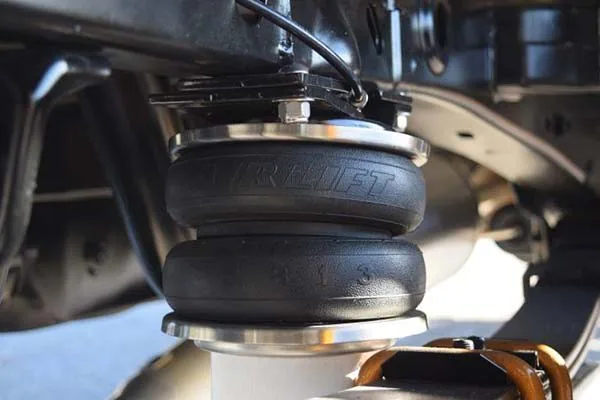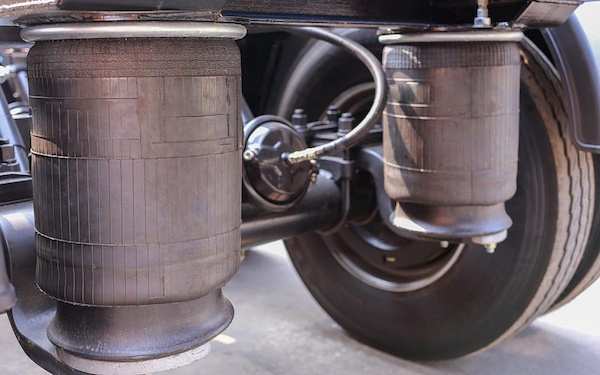Air Suspension 101: What Car Owners Should Know
The suspension in your car plays a key role in handling, keeping the car stable, and enabling controlled cornering and braking. It works together with the steering, brakes, advanced vehicle ride systems and tyres for maximum traction and grip, regardless of road surfaces or how fast you’re going. There are several suspension systems. Conventional spring and shock setups have been steadily replaced with air suspension parts riding on air bags instead of springs. The setup offers several benefits, with ride comfort topping the list.
What is Air Suspension?

Air suspension has changed how we think of cars, especially in terms of ride comfort and handling. Instead of steel springs, the system revolves around rubberised air bags inflated with compressed air. The change offers a smoother ride and levels of adjustability unseen anywhere else. Vehicles can be lifted to dampen more imperfections on rougher roads or lowered to reduce the centre of gravity and wind resistance for tighter steering response, quicker braking, and less body roll in corners. The versatility different car suspension components offer, as separates or part of a system, is behind the uptick in air suspension, replacing conventional layouts or racing setups based around coilovers. So, what makes this suspension type so popular, and what are its main benefits?
Benefits of Air Suspension Systems
Sales of car suspension components have spiralled in recent years, owing to the long list of benefits over usual setups. This includes:
- Improved ride quality – cars glide over roads, soaking up every pothole, bump or other obstacles along the way. The compressed air springs handle changes to road surfaces much better than traditional coil springs, leading to substantially lower noise, vibrations and harshness getting through to the cabin and spoiling the ride.
- Improved handling – lowering air bags stiffens up the setup, with vehicles becoming more responsive. A simple flick of a switch (or nothing at all in automated systems) is all it takes. There’s more traction and grip through the tyres, better road holding, sharper braking response with reduced instances of front-end dive, and better acceleration without rear-end squat.
- Versatility across multiple vehicle types – air suspension has been used at the rear axles in heavier commercial trucks for years. The lessons learnt here have steadily trickled to other sectors. Utes for instance benefit from improved weight distribution, resulting in more safety and increased traction through all wheels. Moreover, there’s less bounce on rougher roads in unladen utes. Similarly, performance setups offer more height and pressure settings than say coilovers to get the best handling, regardless of how or where you drive.
- Reduced wear in related parts – with airbags bearing the most stress in keeping the vehicle stable and level, there’s less wear and tear to related vehicle parts. Tyres, in particular, benefit from less uneven wear (maximizing grip levels) and there’s less stress to parts like control arms, or steering components.
Now, for the downsides. These are few and far between, but no suspension type is perfect. The first gripe is cost. With expensive management systems constantly monitoring things like road height and air pressure, the system can get pricey. This though is offset with less parts wear and generally lower maintenance needs. With quality parts, gripes like air leaks or misbehaving sensors are easy to diagnose and fix. Next, is the time to get air suspension installed. For all four wheels, you’ll be looking for the better part of a whole day, and matching labour costs towards the end price. Lastly, fuel consumption can be higher due to more weight. These though are only minor setbacks, and once on, air suspension quickly shows its true colours.
Parts and How it Works

Central to all air suspension systems are the air bags. These are heavy-duty pieces of reinforced vulcanised rubber, able to withstand extreme air pressure. They replace coil and leaf springs, and straddle above each wheel, with the top end connected to the chassis via a thick metal plate. Multiple metal wires reinforce the bags to ensure optimal strength. Each one can comfortably handle the weight of the vehicle. Convoluted air bags, resembling two stacked tyres, are the most common type seen in passenger cars, while heavier vehicles have thinner but taller roller bags in tapered designs. Air bags can be mounted on top of stock shock absorbers or calibrated shocks for each vehicle can be purchased separately.
The bags are fed pressurised air from tanks and compressors via rubber or braided steel air lines. To ensure the correct tyre pressure, an electronic management system based around height and pressure sensors monitors the air pressure in each air bag, and adjusts it to changing road conditions. The goal is to keep vehicles level relative to the road or feed air to specific wheels, for instance, to lift wheels in 4WDs out of ruts in off-roading use.
Price differences are mostly based on vehicle requirements, driver needs and the car suspension components used. For instance, fully automated systems in luxury cars work with other systems to scan road surfaces ahead and do micro-adjustments without driver input. These are on the pricier side. For most uses, and a better buy for off-roading are manually operated air suspension setups, with controls mounted in the dash.
Choosing the right system is also simplified. Air bags, shocks, tank sizes and air lines are all specified for the make and model to ensure consistent fit with the rest of the vehicle and a suspension that’s a cut above the rest in terms of comfort, practicality and performance.